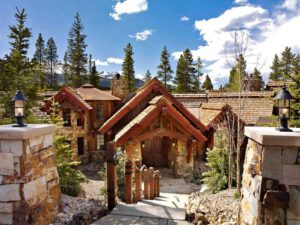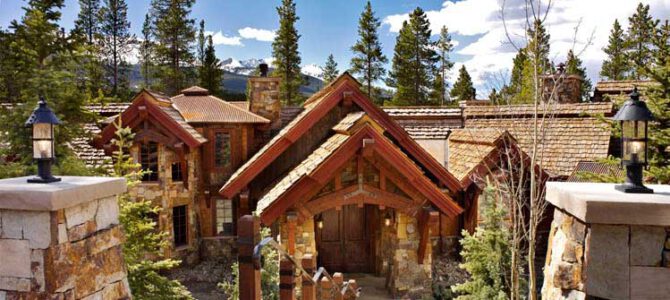When choosing a home builder, you want to select one with experience and a reputation for quality. In addition to offering construction services, Oregon Log Home Builder provides expert advice and recommendations on ongoing maintenance.
Modern log homes are built using a system that combines engineering principles with specific crafting, sealing, and fastening techniques for particular tree species. These systems typically result in a more durable, energy-efficient, and cost-effective structure than traditional framed homes.

The structural integrity of a log home is one of the most important considerations. Choosing a log home builder with a strong track record is essential. You should also consider their experience with your local building codes. If they are familiar with the codes, you can be sure that your log home will meet and exceed all requirements. It’s also a good idea to choose a company that provides a detailed construction manual and uses the highest quality logs for its homes.
A good log home builder will be able to advise you on the type of wood that best suits your needs and budget. It is also important to ensure that the logs are treated with borate at the mill to protect them from infestations by termites, carpenter ants and other pests. This treatment is an effective and cost-efficient way to ensure the durability of your log home.
It’s also a good idea to find out whether the company that you’re considering has a reputation for honesty and integrity. Ask if they have been in business for many years and whether their customers are satisfied with their work. A builder with a good reputation is more likely to produce high-quality homes in a timely manner.
When selecting a builder for your log home, it’s important to choose someone who can provide the materials and services you need in a timely manner. It’s also a good idea if the builder you select works closely with the manufacturer to ensure that your dream log home is built to the specifications you have selected.
During the framing stage of construction, a building inspector will inspect the logs to ensure that they are properly stacked and fastened together. This inspection is crucial because it ensures that the logs are tightly bound together and can withstand the stresses of the structure. In addition, the inspector will look for any areas where water may seep in and cause damage to the logs.
A well-constructed log home is very durable and can withstand extreme weather conditions, including heavy rains, lightning and tornadoes. In fact, it can even resist the abrasive effects of wind and snow. In addition to their superior strength, logs offer great insulation and energy efficiency.
The log home builder you choose should be able to provide the option of creating an eco-friendly home. This means the building materials used in a log home are more environmentally friendly than those used in traditional homes. This is because they are produced with less toxic chemicals. This is a much better choice for the environment and for your health as well.
One of the most important reasons to build a log home is its energy efficiency. The natural wood in a log home is an excellent insulator, and this reduces the amount of energy needed to heat and cool the house. Logs also have good thermal mass properties, which help keep the indoor temperature stable throughout the year.
In addition, the wood in a log home is an excellent air filter. This helps to prevent allergens and pollutants from entering the home, and this makes log homes ideal for people with allergies or respiratory conditions. In addition, the wood provides a natural source of humidity to the home. This helps to prevent mold and mildew, which can cause a variety of health issues.
Another way to make a log home more eco-friendly is to use solar energy. Solar panels can be installed on the roof of a log home, and this can help to cut down on utility bills. Solar power is a great alternative to fossil fuels, and it’s also becoming more affordable as technology advances.
Many modern log homes are built with energy-efficient heating and cooling systems. They are also crafted using eco-friendly materials, and the homeowners often opt for sustainable or recycled furnishings. They are usually located in areas that are free from noise, traffic, and pollution. This makes them the perfect choice for those who want to live a green lifestyle while still enjoying the comfort of a modern home. In fact, a recent study has shown that log homes can be 15 to 20 percent more energy efficient than other types of homes. This is due to the fact that they are built with logs that come from sustainable forests. This helps to preserve the world’s forests while providing the builders with a steady supply of raw material for their projects.
Log homes are eye-catching, and they have a rustic aesthetic that looks stunning when paired with a backdrop of wooded or mountain scenery. They are also a great choice for vacation properties, and they can offer the perfect place to get away from everyday stresses. A new log home can also add value to a property, and it may be able to offer better tax breaks than other types of structures.
While many traditional log homes are located in remote locations, modern hybrid log and timber frame homes can be built in any setting. These homes combine the classic textured look of hand-hewn logs with timber framing and contemporary elements. For example, they can include vaulted ceilings, modern kitchens, central air and heat, and excellent insulation. Additionally, these homes can be more energy efficient than traditional log homes, making them a smart choice for consumers looking to reduce their carbon footprint.
When deciding on a log home builder, it is important to choose one with extensive experience and a good reputation. These builders will be able to guide you through the entire process, including design, engineering, construction, and costs. They will also have a thorough understanding of building conditions in your area and be able to provide you with detailed estimates.
One of the most important aspects of a log home is its durability. Unlike conventional structures, log homes can last for decades without deteriorating. In fact, some log homes have been in use in Europe for more than 800 years. However, a home needs to be properly maintained to ensure that it stands the test of time.
One of the most common concerns regarding log homes is moisture, and this is why preventative maintenance is so important. Regular washing with various detergents can keep rot at bay, and it is important to inspect the chinking on a regular basis to make sure that it is still sealing well. Additionally, it is a good idea to re-stain the exterior of the home every three or four years.
A log home is not like any other kind of house and as such, it needs special care to look its best. A high-quality stain is essential to protect the logs from moisture, insects, wood rot, mold, mildew and UV rays.
A good stain should last a minimum of 3 years and is easily reapplied. The builder can help select the right stain for your log home and will apply it to the exterior after the logs are dry and weathered. It is a good idea to inspect the stain annually and apply more as needed. If your stain begins to show signs of wear and tear it is important to remove the worn areas and re-stain.
Your builder should be able to provide you with samples of different stains to help you choose the right color. Different stains have different properties but all of them will seal the logs and protect them from UV rays, moisture, insects and other damage. The type of stain you choose will also depend on your budget.
The final inspection and walk-through of the new house is a momentous day for anyone building a log home. After months (or years) of dreaming, planning and constructing, the house is ready to be seen and enjoyed.
Inspecting and repairing minor problems as they arise is an essential part of maintaining your log home. A leaking gutter, for example, could cost $50 to fix but left untreated could result in a $5000 repair bill down the road. Similarly, checking the logs for checks and chinking and having them re-chinked as needed can prevent air, insects, moisture and other damaging materials from squeezing between gaps in the logs.
Cedar is the preferred material for log homes because it produces preservatives that make it one of the most insect, rot and decay resistant wood species, which provides maintenance tips and supplies. Pine, on the other hand, requires more regular treatment with chemicals to discourage pests and rot. In addition to chinking and re-chinking, other common maintenance items include the lubrication of all mechanical components, the re-caulking of any cracks and crevices and the periodic re-tightening of screw jacks, which adjust the level of the logs as they settle.
